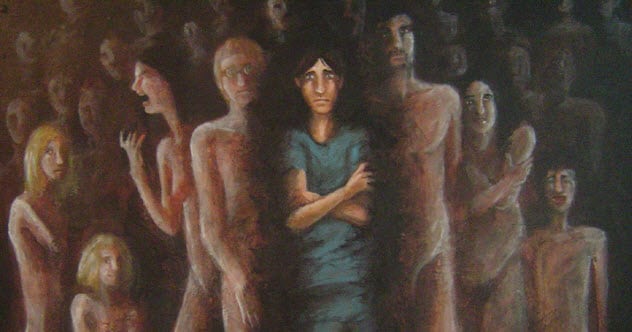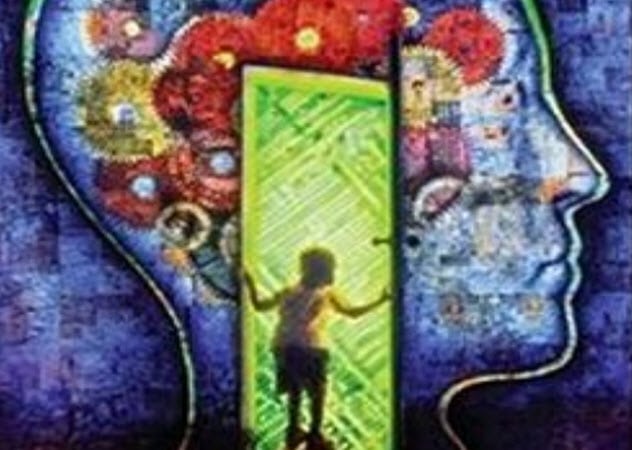 Mysteries
Mysteries  Mysteries
Mysteries  History
History 10 Surprising Stories About the Texas Rangers
 Humans
Humans 10 Philosophers Who Were Driven Mad by Their Own Theories
 Miscellaneous
Miscellaneous 10 Video-Game-Worthy Weapons and Armors from History
 Weird Stuff
Weird Stuff 10 Psychics Who Accurately Predicted Wartime Events
 The Arts
The Arts 10 Pieces of Art Inspired by a Broken Heart
 Health
Health 10 Science Fiction-Sounding New Medical Treatments
 History
History 10 Surprising Facts About the Father of Submarine Warfare
 Space
Space Ten Astonishing New Insights into Alien Worlds
 Weird Stuff
Weird Stuff 10 Bizarre Summer Solstice Rituals Still Practiced Today
 Mysteries
Mysteries Top 10 Haunting Facts About the Ghost Ship MV Alta
 History
History 10 Surprising Stories About the Texas Rangers
 Humans
Humans 10 Philosophers Who Were Driven Mad by Their Own Theories
Who's Behind Listverse?

Jamie Frater
Head Editor
Jamie founded Listverse due to an insatiable desire to share fascinating, obscure, and bizarre facts. He has been a guest speaker on numerous national radio and television stations and is a five time published author.
More About Us Miscellaneous
Miscellaneous 10 Video-Game-Worthy Weapons and Armors from History
 Weird Stuff
Weird Stuff 10 Psychics Who Accurately Predicted Wartime Events
 The Arts
The Arts 10 Pieces of Art Inspired by a Broken Heart
 Health
Health 10 Science Fiction-Sounding New Medical Treatments
 History
History 10 Surprising Facts About the Father of Submarine Warfare
 Space
Space Ten Astonishing New Insights into Alien Worlds
 Weird Stuff
Weird Stuff 10 Bizarre Summer Solstice Rituals Still Practiced Today
10 Interesting Things About Dissociative Identity Disorder
Dissociative identity disorder can affect someone who has experienced a trauma in some way. As a coping mechanism to deal with the trauma, the person’s mind creates different personalities.
This disorder is very interesting, and there have been many movies and television shows made around the subject. Even though some of us are familiar with the condition, there is still a lot that we do not know.
10 It Is Not As Rare As We Think

Most of us have only seen dissociative identity disorder in movies and television shows. We may also believe that it is uncommon and that we will never meet anyone with it. However, it is not as uncommon as many people believe.
Through research, experts have agreed that about 2 percent of the population suffers from dissociative identity disorder.[1] Although that percentage may not seem like a lot, it equals over six million individuals in the US alone. As we will discuss later, dissociative identity disorder affects everyone differently. So in some cases, it is a lot harder to see than in others.
9 It Is Not Always Extreme

As portrayed in the movies or on television, dissociative identity disorder looks extreme. The people in these stories have many personalities which are all very different from one another.
In real life, though, that is not always the case. When the person takes on a different personality, only little things usually change—such as the individual’s voice, the way he is sitting, or the emergence of little quirks that he did not have before.[2]
When someone has dissociative identity disorder and switches from one personality to another, that person is often confused, anxious, or forgetful. Again, this is not nearly as extreme as portrayed by the media.
8 What Types Of People Are Affected By It

Most of us know that dissociative identity disorder can affect a person of any gender or race. What is very interesting about this condition, though, is who it affects the most.
First, dissociative identity disorder usually occurs as a result of a trauma suffered by a child at age nine or younger. This means that many children also suffer from this disorder. Next, women usually have a higher incidence than men do because females experience more childhood abuse. This can lead to the development of dissociative identity disorder.
This condition can affect people all around the world, but we see it the most in the United States. Many factors may contribute to why this disorder is rising among American children, but it could be due to the high stress that US children feel from society.[3]
7 Treatment

One of the biggest myths connected with dissociative identity disorder is that treatment can make it worse. Unfortunately, there were cases in the past when some misinformed therapists made the condition worse for their patients. This can happen with any mental illness, though.
When therapists are educated on the subject, their patients’ anxiety, depression, and dissociative symptoms can vastly improve, if not disappear completely. Unfortunately, this myth arose due to a few cases that went wrong. But for the most part, treatment can make a huge difference in people who have this disorder.[4]
6 Connection With Schizophrenia

Another misconception is that schizophrenia and dissociative identity disorder are the same thing or that they are connected. These disorders do have a lot of similarities, but both were also seriously misunderstood for a long time.
What are the similarities between these two mental disorders, and why did people confuse them? Both conditions involve anxiety, social withdrawal, possible changes in speech, and confusing thoughts.
Although there are many similarities, there are also major differences. Schizophrenia does not involve alternate personalities, and dissociative identity disorder does not involve hallucinations.[5]
5 The First Studied Case

In 1791, the first account of dissociative identity disorder was recorded and studied. (Some sources say the first example was described in 1646.) The 1791 case involved a 20-year-old woman who had two distinct personalities.
This woman was German, which was her first personality. Her second personality was that of a French woman. She spoke perfect French and behaved like a French aristocrat. The French woman was aware of the German woman but not the other way around.[6]
After this example was studied and more light was shined on dissociative identity disorder, more cases were reported and researched.
4 Suicide

People with dissociative identity disorder usually have anxiety and depression, which can lead to suicidal thoughts and suicide attempts. Even though there are some sad statistics related to this condition, something very interesting happens to people with dissociative identity disorder with regard to suicide.
In some cases, a patient’s alternate personalities have reported different numbers of suicide attempts. This means that the alternate personalities had tried to commit suicide at different times, and the other personalities were not aware of it.[7]
3 No Cure

Unlike many mental illnesses, dissociative identity disorder has no cure or even medication that can help people with it. Only therapy appears to be an effective treatment, although it may not work for everyone.[8]
Anxiety, depression, and substance abuse are some associated conditions of dissociative identity disorder. All of these can be treated with medication and other methods.
2 Time For A Diagnosis
When we think of the diagnosis for a physical or mental illness, we probably think that it will be reached relatively quickly. When it comes to dissociative identity disorder, though, some experts have said that a proper diagnosis can take at least seven years.
Why does this disorder take so long to diagnose?
Well, this is a very complex condition. It usually involves some kind of trauma, other mental disorders, and different personalities who can bring different things to the table when a doctor or therapist is trying to figure out what is going on with the patient.[9]
During the entire time that the person is waiting for the diagnosis, they will be in mental health care.
1 Kim Noble

Finally, we are going to look at a more recent case of dissociative identity disorder. Kim Noble has about 100 personalities, one of the highest numbers ever reported.
She is able to express herself and learn about her different personalities—men, women, adults, and children—through art. Many reveal their characteristics through art with unique styles. Kim switches personalities about 3–4 times per day.[10]
I am a teacher who likes to write in their free time.
Read more interesting stories about dissociative identity disorder and other mental illnesses on 10 Famous Cases Of Dissociative Identity Disorder and 10 Stars Who Struggled For Years With Mental Illness.








